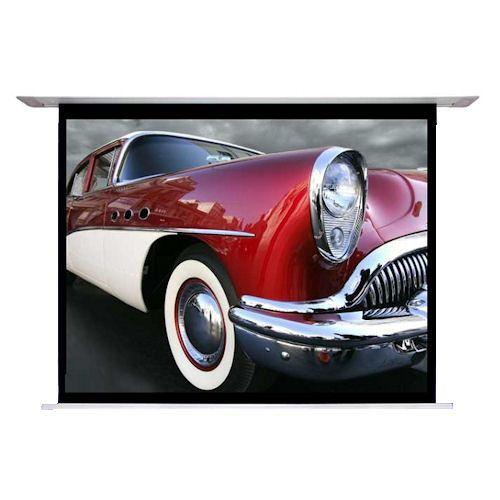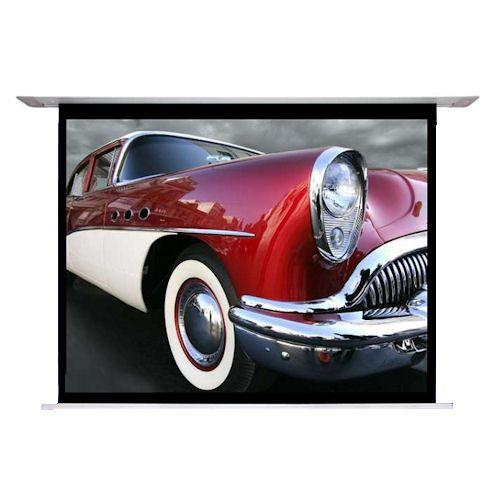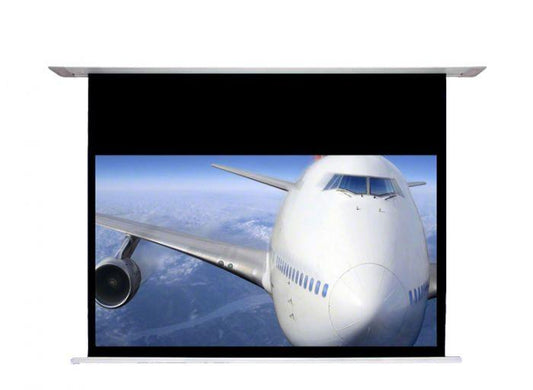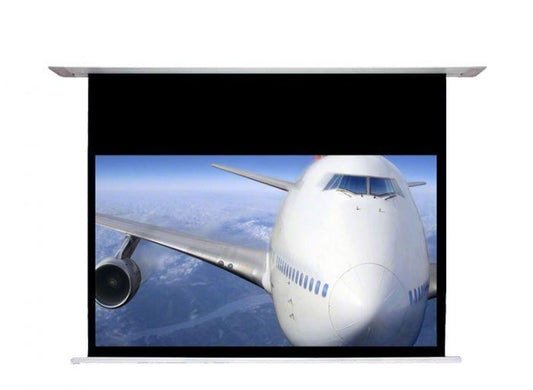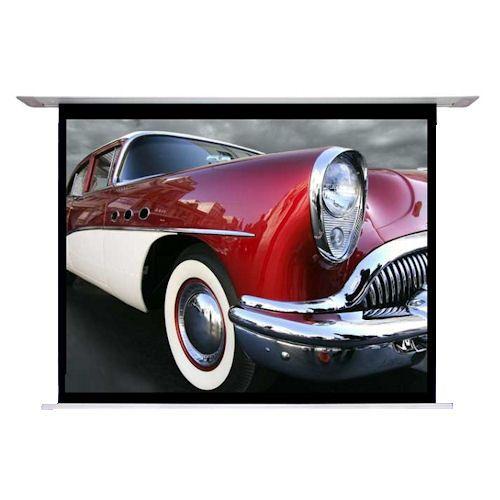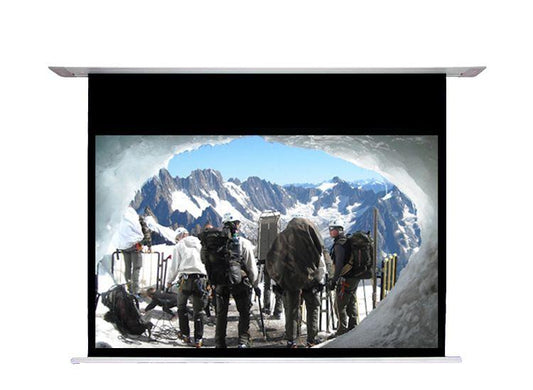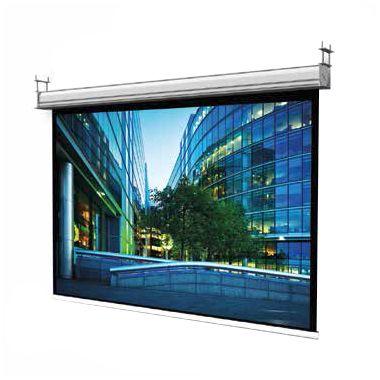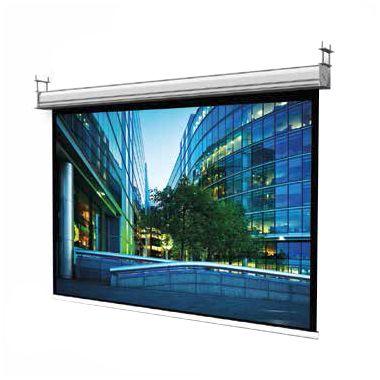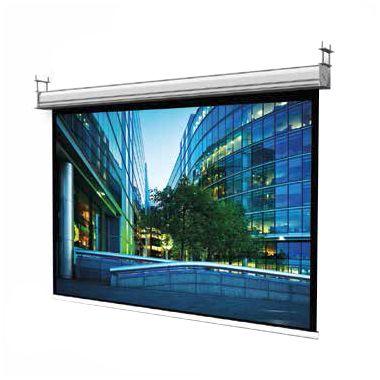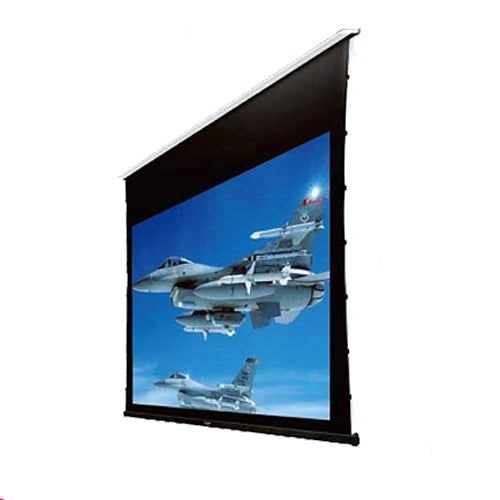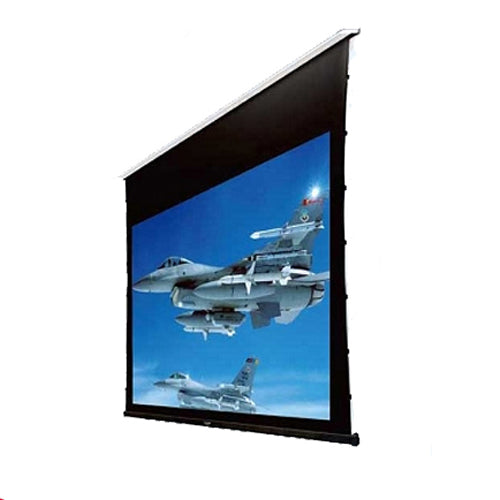In-ceiling, or recessed projector screens are designed to be fitted into a recess in a finished or suspended ceiling for a professional and streamlined finish. Once fitted the projector screen will be almost completely hidden from view the perfect finish for a boardroom or home cinema installation.
Read more in the buying guide at the bottom of the page and use the product filters to help you make the right choice.
-
Sapphire Recessed Ceiling Screen (4:3) 1.8m 84"
Regular price £545.00£654.00 Inc VATRegular priceUnit price per -
Sapphire Recessed Ceiling Screen (4:3) 2.0m 100"
Regular price £560.00£672.00 Inc VATRegular priceUnit price per -
Sapphire Recessed Ceiling Screen (16:9) 1.8m 77"
Regular price £615.00£738.00 Inc VATRegular priceUnit price per -
Sapphire Recessed Ceiling Screen (4:3) 2.4m 120"
Regular price £630.00£756.00 Inc VATRegular priceUnit price per -
Sapphire Recessed Ceiling Screen (16:10) 2.0m 95"
Regular price £635.00£762.00 Inc VATRegular priceUnit price per -
Sapphire Recessed Ceiling Screen (16:9) 2.0m 92"
Regular price £635.00£762.00 Inc VATRegular priceUnit price per -
Sapphire Recessed Ceiling Screen (16:10) 2.4m 109"
Regular price £710.00£852.00 Inc VATRegular priceUnit price per -
Sapphire Recessed Ceiling Screen (16:9) 2.4m 106"
Regular price £710.00£852.00 Inc VATRegular priceUnit price per -
Sapphire Recessed Ceiling Screen (4:3) 3.0m 150"
Regular price £725.00£870.00 Inc VATRegular priceUnit price per -
Sapphire Recessed Ceiling Screen (16:9) 2.7m 120"
Regular price £750.00£900.00 Inc VATRegular priceUnit price per -
Sapphire Recessed Ceiling Screen (16:10) 2.7m 123"
Regular price £750.00£900.00 Inc VATRegular priceUnit price per -
Sapphire Recessed Ceiling Screen (16:10) 3.0m 139"
Regular price £820.00£984.00 Inc VATRegular priceUnit price per -
Sapphire Recessed Ceiling Screen (16:9) 3.0m 138"
Regular price £820.00£984.00 Inc VATRegular priceUnit price per -
SCREENLINE Pro Electric In-Ceiling Screen (16:10) 1.9m 88"
Regular price £995.00£1,194.00 Inc VATRegular priceUnit price per -
SCREENLINE Pro Electric In-Ceiling Screen (16:10) 2.1m 100"
Regular price £1,055.00£1,266.00 Inc VATRegular priceUnit price per -
SCREENLINE Pro Electric In-Ceiling Screen (16:10) 2.4m 110"
Regular price £1,140.00£1,368.00 Inc VATRegular priceUnit price per -
SCREENLINE Pro Electric In-Ceiling Screen (16:10) 2.9m 134"
Regular price £1,295.00£1,554.00 Inc VATRegular priceUnit price per -
Sapphire Tab-Tensioned Recessed Ceiling Screen (16:9) 2.0m 92"
Regular price £1,300.00£1,560.00 Inc VATRegular priceUnit price per -
Sapphire Tab-Tensioned Recessed Ceiling Screen (16:9) 2.4m 106"
Regular price £1,490.00£1,788.00 Inc VATRegular priceUnit price per -
Sapphire Tab-Tensioned Recessed Ceiling Screen (16:9) 2.7m 120"
Regular price £1,670.00£2,004.00 Inc VATRegular priceUnit price per
Buying Guide
Why buy an In-Ceiling screen?
Electric In-Ceiling projector screens (also known as Recessed ceiling projector screens) are designed to be mounted flush to the ceiling itself and totally hidden out of sight.
The casing will allow a discreet installation and the screen will drop down when in use. They are a popular choice for home cinema applications where you don't necessarily want the projector screen to be visible all the time.
Buying an in-ceiling projector screen offers several advantages, especially for those looking to create a high-quality, versatile viewing experience in a space-constrained or aesthetically-focused environment.
In-ceiling screens are designed with high-quality materials that enhance the viewing experience by providing a flat, tensioned surface that minimises wrinkles and distortions. This ensures a crisp, clear image projection.
These screens provide a sleek, modern look. When retracted, they are completely hidden from view, preserving the room's decor and design. This can be particularly important in multi-use spaces such as living rooms or conference rooms.
With motorised options, you can lower or retract the screen at the touch of a button, making it easy to set up or hide away. This convenience is particularly beneficial for presentations or movie nights.
Standard or Tab Tensioned?
Most electric projector screens have a weighted bar built into the screen fabric which keeps the surface pulled nice and flat when in use. Tab-tensioned screens offer the additional benefit of an inbuilt tension system to create a completely flat viewing surface. The material on a Tab Tension screen is not only pulled down by the weight of the bar at the bottom but also from the left and right side by a Nylon string. The string is periodically connected to the material via small "Tabs" hence the name Tab Tension. These screens are usually higher quality and if budget allows, are a great option for optimal viewing.
In-Ceiling Screen
Electric In-Ceiling projector screens (also known as Recessed ceiling projector screens) are designed to be mounted flush to the ceiling itself and totally hidden out of sight.
The casing will allow a discreet installation and the screen will drop down when in use. They are a popular choice for home cinema applications where you don't necessarily want the projector screen to be visible all the time. In-Ceiling projector screens are a bit more tricky to install than a standard electric projector screen. We do recommend professional installation for optimal results.
Smart-Move Electric Projector Screens
SmartMove projector screens are designed for either very high ceilings, or to avoid architectural features like windows, arches in churches, or AC vents. As well as the normal operation of the screen fabric dropping from the barrel, the barrel itself lowers into position via small built in winches. This enables the screen casing to be dropped up to 5 meters from the fixing position.
About Aspect Ratio
Aspect ratio is the shape of the viewing area of the projection screen. We offer our projector screens in a Square shape (1:1), Video Format (4:3), Widescreen (16:9) and WXGA (16:10). Square format and Video format projector screens used to be very popular, but the introduction of high-definition has pushed more users to opt for 16:9 or 16:10 aspect ratios. It's best to match the aspect ratio with the native resolution of your projector and video source.
For example, if you are mainly using your manual pull-down projector screen for a home cinema experience, most home cinema projectors will be Full HD (1080p) as this is the standard format of modern TV sets, SKY, blueray etc. Therefore we would recommend a 16:9 projector screen to match the image shape. The black borders will add contrast and improve the image quality.
If you are using your projector screen to present presentations from your work laptop, and your business projector is a WXGA projector, it's likely that a 16:10 projector screen will be the best fit.
Square projector screens allow you to project any image shape, which is great for flexibility, however, because the image is not matched with black borders, the picture quality does suffer.
Fitting In-Ceiling Screens
In-Ceiling projector screens are a bit more tricky to install than a standard electric projector screen. We do recommend professional installation for optimal results.
Contact Us
If you need any help or advice in purchasing the right screen for your needs, please contact our sales team by using the live chat, calling 0161 850 9696 or using the contact form below.


